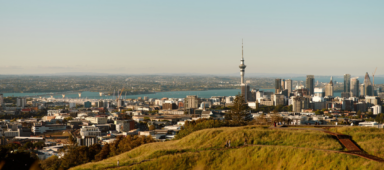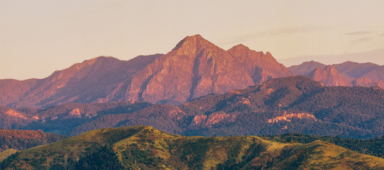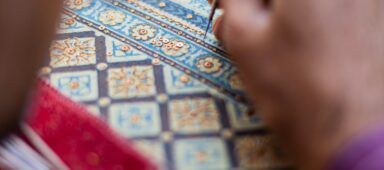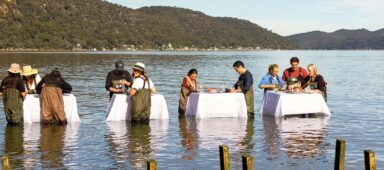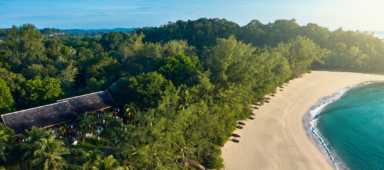The small Malaysian town of Siniawan turns from sleepy hollow by day to vibrant enclave by night.
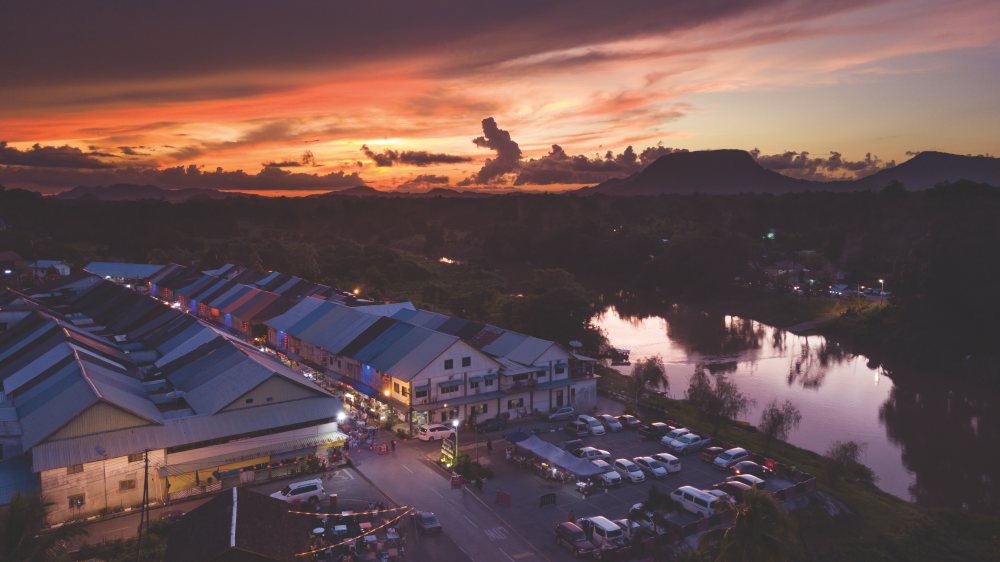
Driving into Siniawan during the day, one might think they’ve stumbled across a ghost town. Tucked along the banks of the Sarawak River, the narrow main street is devoid of traffic, while its two rows of wooden shophouses are mostly shuttered, save for a general store or two.
Weekend evenings, however, are a different story. In recent years, the Siniawan night market, which runs from Fridays to Sundays, has become one of the top attractions for tourists in Sarawak’s state capital, Kuching, a 30-minute drive away.
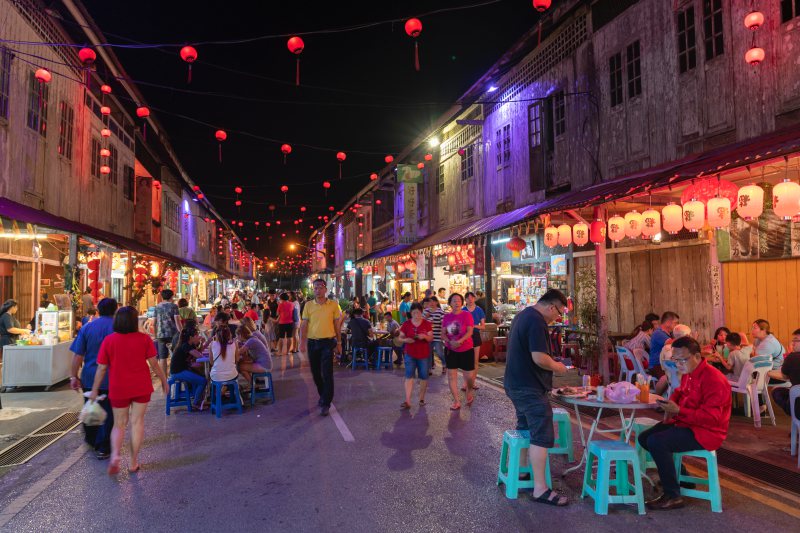
The best time to come is just as the sun sets, as you’ll be able to see the main street coming to life. Shutters are unblocked, stalls are set up and shops open for business for the night. Decorative red lanterns bob overhead, reflecting the town’s Hakka Chinese heritage, while vendors peddle delicious street food.
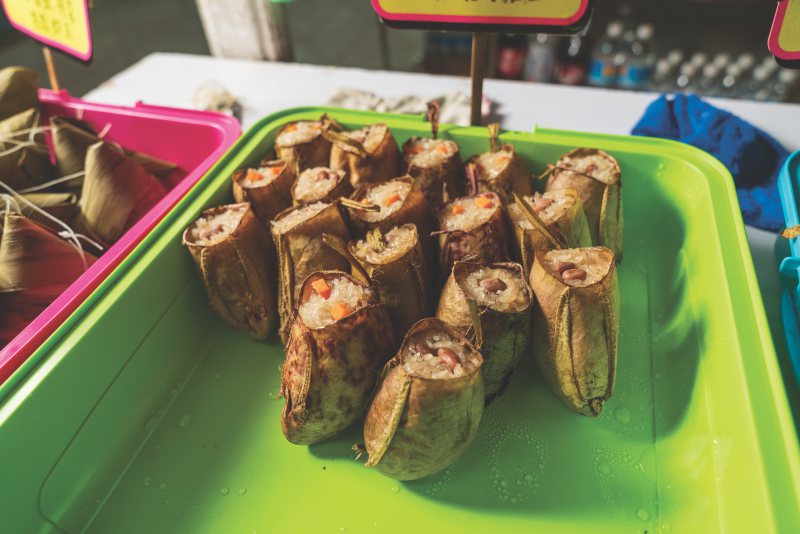
Some of the must-tries include the pitcher plant stuffed with steamed glutinous rice, a traditional Bidayuh delicacy, as well as kompiah – mini burger-like buns stuffed with meat and various fillings. There is also halal food sold by Muslim traders. Diners can savour their food in an open-air setting, flanked by the town’s unique-looking buildings.
Early Days
While tourists may come in droves now, it wasn’t that long ago that the town was on the verge of being abandoned – but for the staunch efforts of the local community.
Once a bustling trade town, Siniawan traces its beginnings back to the 1840s. Encouraged by growing trade and the gold rush in nearby Bau, Hakka Chinese traders fleeing Dutch mistreatment in Sambas (now West Kalimantan) settled in Siniawan.
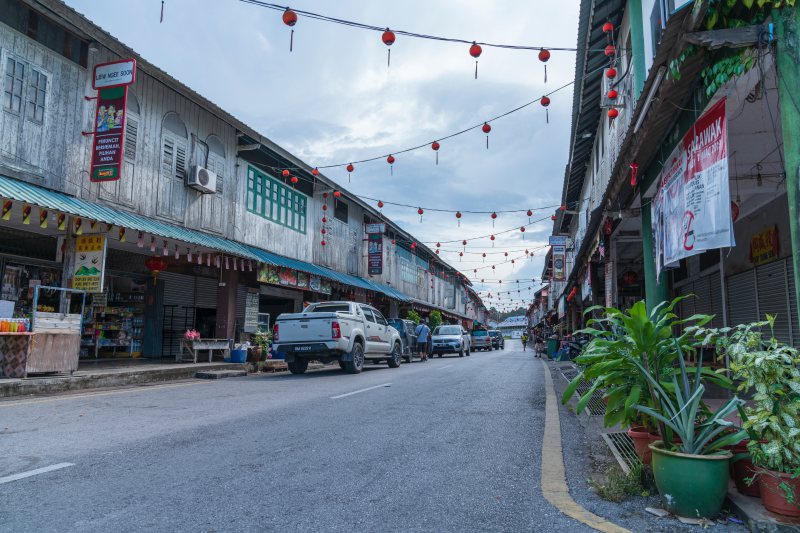
Back when roads and infrastructure were scarce, the river was the heart of trade in Sarawak, and Siniawan quickly grew to become a prosperous trade settlement. Its strategic location meant that boats travelling from Kuching to Bau stopped frequently to refuel and trade in town. At its peak, the settlement had over 300 Chinese traders.
By the late 1850s, however, new taxation laws implemented by British adventurer and ‘White Rajah’ James Brooke, who ruled Sarawak at the time, caused unrest among the gold miners of Bau. Led by their leader Liu Shan Bang, 600 miners launched an attack on Brooke’s mansion in Kuching, intent on taking his life.
Brooke escaped, and his nephew Charles Brooke led an Iban force to quell the rebellion. Battles were fought in and around Bau and near Siniawan. Local legend has it that the places Buso and Bau (Malay for smelly and smell, respectively) were so named due to the stench of rotting corpses. Fearing they would be caught up in the fighting, the Siniawan Chinese fled back to Sambas, and the town lay empty for many years.
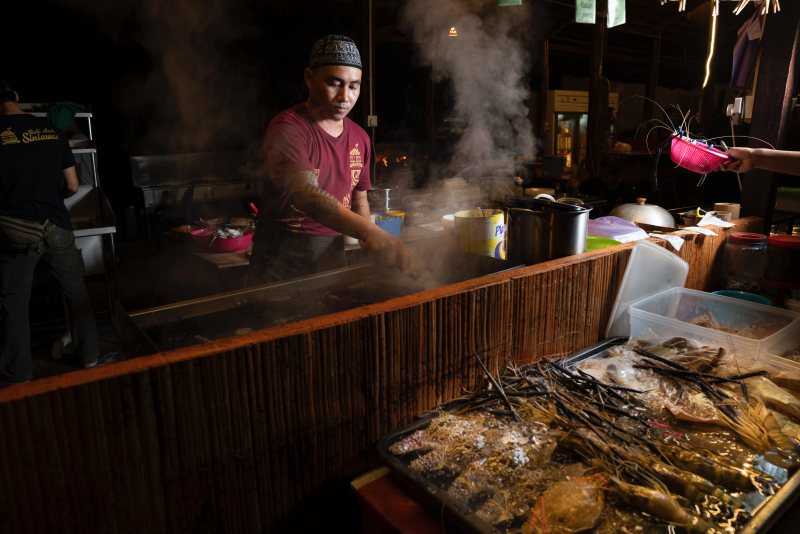
In the 1870s, a new wave of Hakka Chinese from China came to Siniawan and rebuilt the town. The wooden shophouses that visitors see today date back to the 1910s. Unlike the colonial Sino-Portuguese shophouses of Peninsular Malaysia, the architecture in Siniawan features tall, rectangular windows and vertical wood-panelled construction. They also sport rustic, unpainted facades, lending to its ‘cowboy town’ vibe. The architectural style is said to be Javanese.
“The ruling Brooke family enjoyed good relations with the British government in Singapore. It was easier and cheaper for the townsfolk to get Javanese carpenters from Indonesia for the buildings,” says Dylan Lai, a fifth-generation Siniawan resident and chairman of the local youth committee. He adds that in its heyday, the town had its own casino, opium den, hotels and entertainment outlets. Artefacts from this bustling time are still being fished out from the river, especially in the form of old coins.
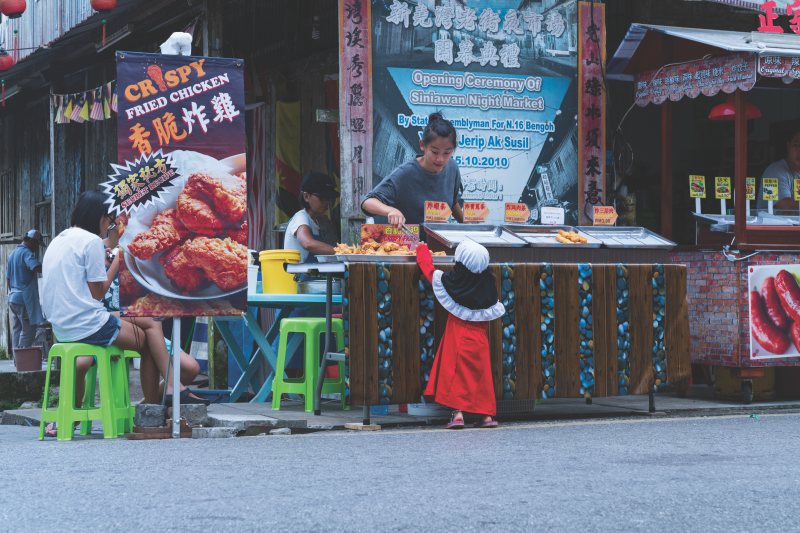
Ironically, Siniawan’s eventual decline came from progress – the building of infrastructure. After the formation of Malaysia in 1963, and as land transportation networks improved, people relied less on the river. “Back then, people still used the main road to go through Siniawan. The opening of new roads and bridges at Batu Kitang and Batu Kawa shortened travel time from Kuching, but completely bypassed our little town, and businesses suffered,” Lai explains.
Being so close to the riverbank, flooding was also commonplace. In 2004, massive flooding saw waters rising to the first floor of the shophouses, devastating much of the old town. As a result, most villagers moved their homes to higher ground.
In 2009, the Siniawan Heritage Conservation Committee was formed in hopes of rekindling the town’s fortunes and to prevent its legacy from being lost to time. Aside from restoring some old buildings, the committee decided to open a night market on weekend evenings to serve hawker food and drinks, and create an inviting atmosphere with buskers and bands. The rest, as they say, is history.
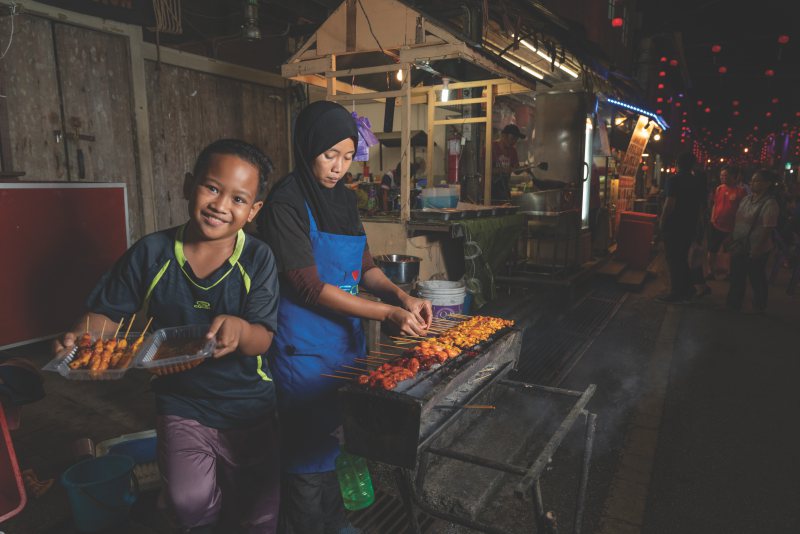
Hope For The Future
Besides the night market, the town regularly hosts cultural events and festivals. In 2016, the town organised its inaugural Pesta Siniawan, a food and heritage festival with a country music theme. The event was an unexpected success and has become an annual fixture, with the latest edition attracting over 18,000 visitors. The next festival is set to be held over the first weekend of October this year.
“Our aim is to make Siniawan a hub for tourism, by integrating the entire experience with other tourism offerings as part of a comprehensive package,” says Serumbu assemblyman Miro Simuh, whose constituency includes Siniawan. Promoting tourism in the area is something close to his heart, as he grew up in neighbouring Kampung Kandis Lama, and has fond memories of visiting the town in his younger days.
“One thing that makes Siniawan unique is the harmonious relationship between the different races living here. The town’s population is mostly Chinese, but the villages surrounding it are mainly Malay and Bidayuh, and there is much intermingling between the different groups,” he explains.
A USD2.4 million (RM10 million) waterfront project is currently in the works, and is expected to be completed by 2021. Miro hopes to introduce unique tourism offerings, such as a river cruise from Kuching and boat rentals for fishing. “We believe that with these plans in place, it can attract people, especially locals who have left for big cities, to return and do business in Siniawan,” he enthuses.
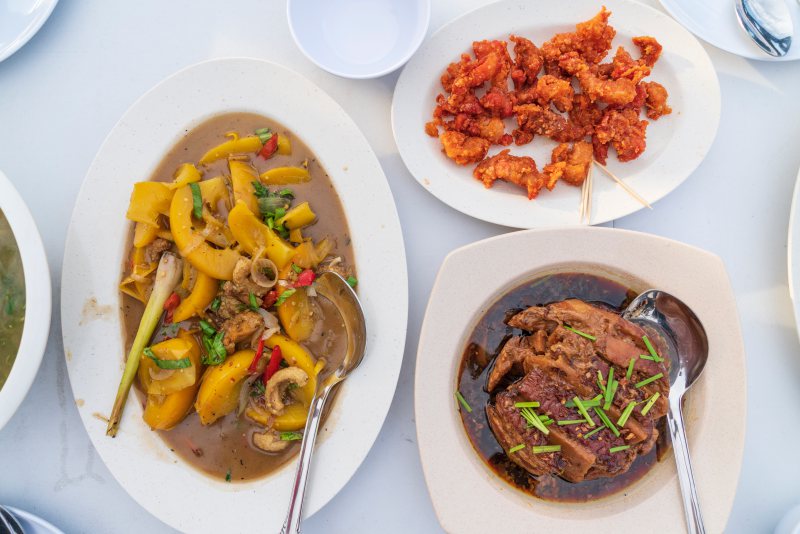
One such example is The Bikalan, a pub-cum-bistro located in the heart of the main street. Run by husband-and-wife team Andy and Grace Newland, the cosy establishment opened late last year and prides itself in authentic Bidayuh food, with dishes such as Dayak Terung Asam Belacan, Young Tapioca Leaf Belacan, Pansuh Chicken and Cangkuk Manis with Egg.
“I first visited Siniawan in 2010 and just fell in love with the place – the people, the culture, everything,” says Andy, who is originally from Britain and spent eight years in Kuala Lumpur as a regional sales manager. After tying the knot with Grace, who is Bidayuh and has family near Siniawan, the pair decided to build a house and retire there.
The opportunity to purchase a dilapidated shop turned into a project to create a bar and café where people can gather, relax and enjoy the tranquil environment. The Bikalan is now a popular hangout spot for locals and tourists alike.
Being the first non-Chinese shop in town, The Bikalan represents a new generation of businesses that are emerging as a direct result of the town’s revival plans. “We are touched by the hospitality of the people here who have welcomed us with open arms, and we believe there is much potential for greatness here,” he adds.
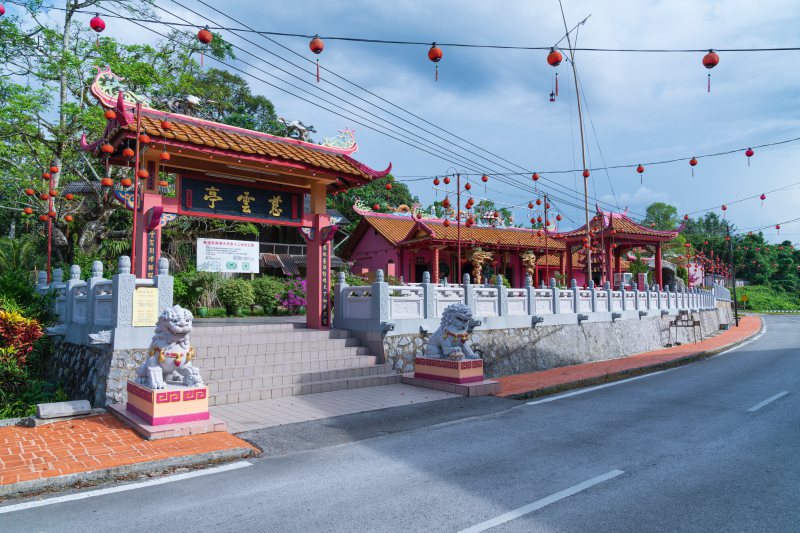
Day Tripping
While most visitors go to Siniawan for the night market and its charming, rustic atmosphere, the area is not short of places to visit during the day. Just a few steps away from the main street is Shui Yue Gong, a Chinese temple dedicated to the goddess Guanyin.
Despite being over 100 years old (a Qing Dynasty signage dated 1886 hangs over one of its entrances), the temple is well-preserved and boasts beautiful traditional architecture, with an orange tiled roof, colourful dragon carvings and a vibrant pink facade. While not large or grand by modern standards, the temple holds special significance among the locals, who come to pray and congregate on major festivals such as Chap Goh Mei (the 15th day of the Lunar New Year), when an annual grand procession takes place.
Another interesting place to visit is the Siniawan Buddhist Village, a sprawling complex that includes a temple, prayer hall, souvenir shop and landscaped grounds. Enjoy a quiet stroll through avenues lined with statues of Buddhist deities, small streams and ponds, before taking a rest underneath one of the gazebos. The complex’s nine-storey pagoda is easily one of the tallest structures in the area, and visitors who make their way to the top will be rewarded with scenic views of the emerald green hills surrounding the temple.
*Photography by Kelvin Chan
